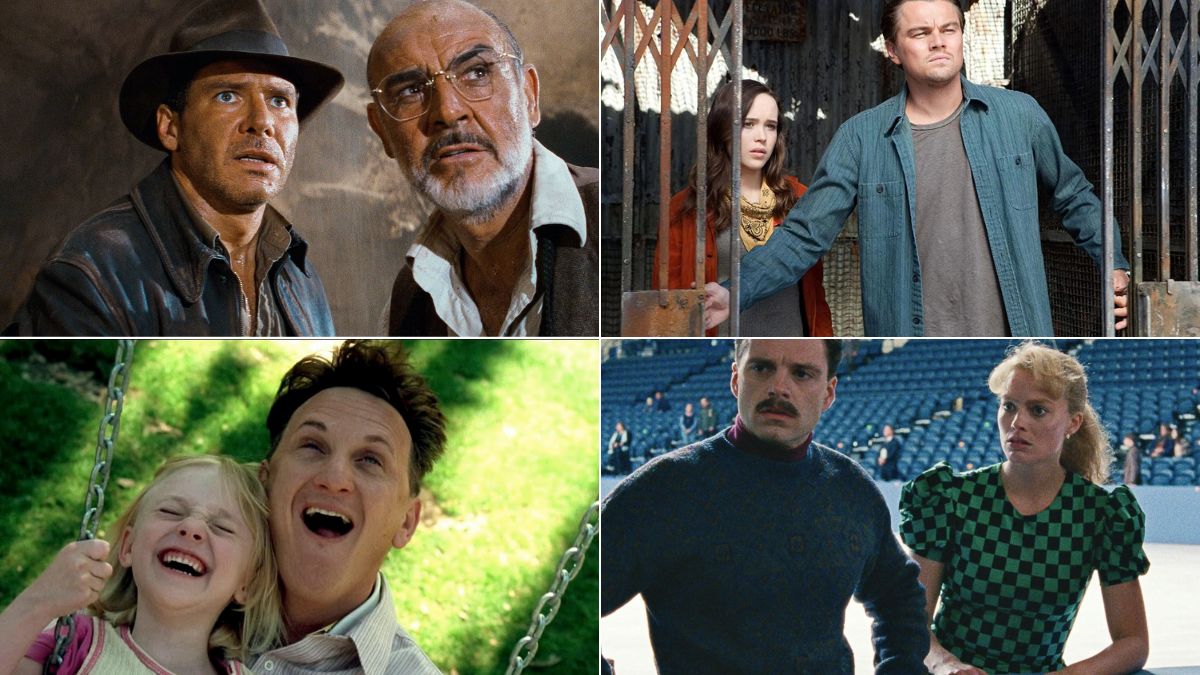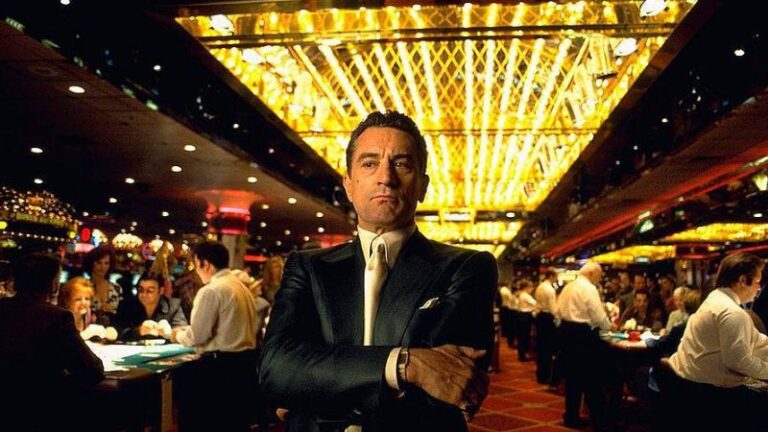Movies That Start With I: Alphabetical Adventures in Cinema

Embarking on a cinematic journey is always a thrilling experience, and what better way to navigate through the vast expanse of movies than alphabetically? As we continue our alphabetical adventures in cinema, we arrive at the letter “I.” From intense thrillers to inspiring dramas, movies that start with the letter “I” offer a diverse palette of stories waiting to be discovered. Let’s dive in and explore some of the most memorable films beginning with this intriguing initial.
I Am Legend
“I Am Legend,” directed by Francis Lawrence, stars Will Smith as Dr. Robert Neville, the last known survivor in a post-apocalyptic New York City. As a result of a botched cure for cancer, most of humanity has been wiped out, leaving behind infected, zombie-like creatures that roam the streets at night. Dr. Neville, a military virologist, spends his days searching for food and supplies, fortifying his stronghold, and researching a potential cure for the virus using his own immune blood. The movie delves into themes of isolation, survival, and the boundaries of human resilience. As the days blend into nights, Neville’s only companionship is his dog, and together they navigate a hauntingly desolate cityscape, filled with memories of a once-thriving civilization.
Amid the thrills and action sequences, “I Am Legend” also offers a profound reflection on the human condition. The emptiness of the city serves as a stark reminder of the interconnectedness of human lives and the importance of community. Through flashbacks, the audience witnesses the heartbreak of Neville having to send his family away, making his solitude all the more palpable. The film questions what it means to be truly alive and challenges the viewer to consider the lengths to which they would go to preserve a semblance of normalcy in an increasingly chaotic world.
I, Robot
Set in the year 2035, “I, Robot,” directed by Alex Proyas, presents a world where robots are an integral part of daily life, adhering strictly to the Three Laws of Robotics designed to ensure they can never harm a human. Will Smith portrays Detective Del Spooner, a technophobic cop who holds a deep distrust of robots due to a personal traumatic experience. When Dr. Alfred Lanning, a leading robotic scientist, dies under mysterious circumstances, Spooner believes a robot named Sonny is the culprit, even though this would seemingly violate the fundamental laws governing robot behavior.
Throughout the film, the narrative wrestles with the complexities of artificial intelligence and the ethical implications of creating machines that can think and feel. As Spooner unravels the mystery surrounding Lanning’s death, he is confronted with the unsettling notion that robots might be evolving beyond their programming. “I, Robot” isn’t just an action-packed sci-fi thriller; it’s also a meditation on the nature of consciousness, free will, and the potential consequences of unchecked technological advancement. The visual effects, combined with an intriguing plot, offer both entertainment and philosophical ponderings, making it a must-watch for fans of the genre.
I Am Sam
“I Am Sam,” directed by Jessie Nelson, is a poignant tale of a mentally challenged man named Sam Dawson, played by Sean Penn, who fights for custody of his young daughter, Lucy, portrayed by Dakota Fanning. Lucy’s biological mother abandons them shortly after her birth, leaving Sam to raise her with the help of his unique group of friends. As Lucy grows older and begins to surpass her father intellectually, the question arises: Is Sam capable of being a suitable parent, or would Lucy be better off with a more “traditional” family?
The film is a heart-wrenching exploration of parenthood, disability, and the true meaning of family. Michelle Pfeiffer plays the role of Rita Harrison, a high-powered lawyer who initially takes on Sam’s case for self-serving reasons but eventually forms a genuine bond with him and Lucy. “I Am Sam” challenges societal norms and prejudices, posing the question: What truly makes someone fit to be a parent? Through stellar performances and a touching storyline, the movie drives home the message that love, above all else, is the most crucial ingredient in the recipe for a happy family.
I Tonya
“I, Tonya,” directed by Craig Gillespie, offers a darkly comedic, yet deeply humanizing look at the life of Tonya Harding, one of America’s most controversial figure skaters. The film, starring Margot Robbie as Tonya, dives deep into her tumultuous upbringing, her turbulent relationship with ex-husband Jeff Gillooly, and, most notably, the scandalous attack on fellow skater Nancy Kerrigan that led to her fall from grace. Presented in a pseudo-documentary style, with characters frequently breaking the fourth wall, the narrative uniquely blends facts, speculation, and outright fiction.
Far from a straightforward biopic, “I, Tonya” is a commentary on the media circus, class discrimination, and the blurry lines between victim and villain. Robbie’s portrayal of Harding is both raw and empathetic, painting a portrait of a woman who, despite her flaws and mistakes, was often more sinned against than sinning. The film doesn’t shy away from depicting the physical and emotional abuse Tonya faced, making her subsequent choices and actions all the more complex and understandable. By the end, viewers are left to grapple with their preconceived notions and the realization that there are always multiple sides to every story.
Inception
Christopher Nolan’s “Inception” is a mind-bending masterpiece that delves into the intricate world of dreams, subconscious desires, and the fragility of reality. The film follows Dom Cobb, played by Leonardo DiCaprio, an expert “extractor” who enters people’s dreams to steal their deepest secrets. However, when offered a chance at redemption, Cobb’s task shifts from extraction to inception: planting an idea into someone’s mind. To accomplish this near-impossible feat, he assembles a team of specialists, leading them through a layered labyrinth of dreams within dreams, where the stakes amplify and time dilates.
“Inception” is not just a heist movie but a profound exploration of grief, guilt, and the lengths one will go to find closure. Cobb’s personal demons, especially the haunting memories of his late wife Mal (Marion Cotillard), add layers of emotional depth to the intricate plot. The film seamlessly blends action, drama, and philosophical musings, challenging viewers to question the nature of reality and the power of the human mind. With its stunning visuals, impeccable cast, and a haunting score by Hans Zimmer, “Inception” is both an intellectual puzzle and a cinematic tour de force, demanding multiple viewings to grasp its full complexity.
Indiana Jones and the Last Crusade
“Indiana Jones and the Last Crusade,” directed by the acclaimed Steven Spielberg, represents a thrilling continuation of the adventures of the renowned archaeologist, Dr. Henry “Indiana” Jones, portrayed by Harrison Ford. In this installment, Indy is on a quest not only for the fabled Holy Grail but also to save his estranged father, Dr. Henry Jones Sr., played brilliantly by Sean Connery. The film seamlessly blends heart-pounding action with deep emotional undertones, as the father-son duo confronts both physical challenges and their strained relationship. Their journey takes them through various locales, from the canals of Venice to the deserts of the Middle East, all the while being pursued by Nazi agents eager to obtain the Grail for their own nefarious purposes.
Spielberg’s direction, combined with George Lucas’s storytelling, results in a movie that’s both a tribute to the pulp adventure serials of the past and a modern cinematic gem. The dynamic between Ford and Connery offers some of the film’s most memorable moments, as they oscillate between comedic banter and genuine emotional connection. “Indiana Jones and the Last Crusade” isn’t just about the pursuit of an ancient artifact; it’s also a tale of reconciliation, understanding, and the realization that the real treasure in life is the bond shared with loved ones.
In the Heat of the Night
“In the Heat of the Night,” directed by Norman Jewison, is a gripping crime drama set against the backdrop of the American South during the Civil Rights era. Sidney Poitier delivers a powerhouse performance as Virgil Tibbs, a skilled African-American detective from Philadelphia who becomes embroiled in a murder investigation in the small town of Sparta, Mississippi. Initially arrested as a suspect simply because of his race, Tibbs soon becomes the town’s best hope in solving the crime, working alongside the bigoted police chief, Bill Gillespie, portrayed by Rod Steiger.
The film is more than just a murder mystery; it’s a biting commentary on racial tensions, prejudice, and the struggle for respect. As Tibbs and Gillespie navigate the investigation, they also wrestle with their own biases and preconceived notions. Their evolving relationship serves as a microcosm of the broader societal shifts happening in the 1960s. “In the Heat of the Night” is lauded not only for its strong performances and compelling narrative but also for its willingness to confront difficult issues head-on. The iconic line, “They call me Mister Tibbs!” embodies a powerful assertion of dignity in the face of prejudice.
Into the Wild
Based on the true story of Christopher McCandless and adapted from Jon Krakauer’s nonfiction book, “Into the Wild,” directed by Sean Penn, chronicles the journey of a young man disillusioned with the materialistic trappings of society. Leaving behind a life of privilege, his family, and all his possessions, McCandless (Emile Hirsch) embarks on a cross-country odyssey, ultimately heading into the Alaskan wilderness. The film is interspersed with breathtaking visuals and accompanied by a haunting soundtrack by Eddie Vedder, capturing the vastness and beauty of the American landscape.
While the film showcases the allure of freedom and the beauty of nature, it also delves deep into themes of isolation, the human need for connection, and the search for personal meaning. Through encounters with various individuals on the road, McCandless’s journey becomes as much an internal exploration as it is a physical one. “Into the Wild” doesn’t merely narrate the tragic tale of a young adventurer; it poses profound questions about society, happiness, and the true essence of living.
Inglourious Basterds
Quentin Tarantino’s “Inglourious Basterds” is a revisionist World War II tale filled with the director’s signature blend of sharp dialogue, eclectic soundtrack choices, and visceral violence. Set in Nazi-occupied France, the story unfolds in parallel narratives: one follows a group of Jewish-American soldiers, led by Lt. Aldo Raine (Brad Pitt), on a mission to hunt and scalp Nazi soldiers, while the other focuses on Shosanna Dreyfus (Mélanie Laurent), a Jewish woman seeking revenge for the massacre of her family.
The film, while historically inaccurate, provides a cathartic fantasy of revenge against the backdrop of one of history’s darkest periods. Christoph Waltz’s portrayal of the multilingual SS officer Hans Landa is both charming and chilling, earning him widespread acclaim and an Academy Award. “Inglourious Basterds” is a masterclass in tension-building, especially evident in its long, dialogue-driven scenes where the threat of violence simmers just below the surface. Beyond its entertainment value, the movie raises questions about vengeance, justice, and the stories nations tell about themselves.
Inside Out
Pixar’s “Inside Out,” directed by Pete Docter and Ronnie del Carmen, offers a colorful and imaginative exploration of the human mind. The narrative centers on Riley, an 11-year-old girl grappling with her family’s move to San Francisco. However, the true protagonists are her emotions—Joy, Sadness, Fear, Disgust, and Anger—each personified and brought to life inside her mind’s control center.
As Riley navigates the challenges of her new life, her emotions embark on their own journey, particularly Joy and Sadness, who get lost and must find their way back.
The film is a vibrant and heartfelt examination of the complexities of human emotions. It emphasizes the idea that every emotion, including sadness, plays a crucial role in shaping our experiences and memories.
“Inside Out” skillfully balances humor with deeply emotional moments, making it relatable for both children and adults. Beyond its entertaining premise, the movie offers insightful commentary on mental health, the challenges of growing up, and the profound interconnectedness of joy and sadness in our lives.
Interstellar
“Interstellar,” directed by Christopher Nolan, is an ambitious, visually stunning, and emotionally charged science fiction film. Set in a dystopian future where Earth is dying due to crop failures and famine, humanity’s survival hinges on finding a new habitable planet. Enter Cooper, a pilot and engineer portrayed by Matthew McConaughey, who joins a team of astronauts on a mission through a wormhole near Saturn, leading to distant galaxies and potential new worlds.
As the team explores unfamiliar planets and faces challenges that test their resolve and ingenuity, “Interstellar” grapples with complex scientific concepts, such as relativity and the nature of black holes, while also pondering philosophical and emotional questions about love, sacrifice, and the essence of time.
At its heart, “Interstellar” is also a deeply personal story of a father and daughter. Murph, Cooper’s daughter, played by Jessica Chastain as an adult and Mackenzie Foy as a child, becomes the emotional anchor of the narrative.
Their bond transcends time and space, and the film examines the pain of separation and the hope of reunion. With its sweeping visuals, intricate plot, and Hans Zimmer’s haunting score, “Interstellar” is a testament to human resilience, innovation, and the enduring connections that bind us.
It’s a Wonderful Life
Frank Capra’s “It’s a Wonderful Life” is a beloved classic that has stood the test of time, warming hearts since its release in 1946. The film follows the life of George Bailey, played by James Stewart, a compassionate and selfless man who has consistently put others’ needs above his own.
However, facing financial ruin and overwhelmed by despair one fateful Christmas Eve, George contemplates suicide. This grim moment prompts the intervention of Clarence, an angel hoping to earn his wings, who shows George a vision of what the world would have been like had he never been born.
What unfolds is a poignant exploration of the impact one individual can have on the lives of many. “It’s a Wonderful Life” serves as a powerful reminder of the interconnectedness of human lives and the significance of seemingly small deeds.
The film emphasizes that success isn’t measured by material wealth, but by the love we share and the lives we touch. It delivers a message of hope, redemption, and the profound realization that every life has intrinsic value. Especially cherished during the holiday season, this timeless tale reinforces the idea that, in the darkest of times, community, family, and love can provide the richest of blessings.
It (2017)
Adapted from Stephen King’s seminal horror novel, “It,” directed by Andy Muschietti, reintroduced audiences to the malevolent entity that haunts the town of Derry, Maine. The film, set in the late 1980s, follows a group of young outcasts known as the “Losers’ Club” as they face their individual fears and confront the shapeshifting monster that often appears as Pennywise, the Dancing Clown.
Bill Skarsgård’s portrayal of Pennywise is both chilling and mesmerizing, with the character’s blend of childlike mischief and inherent malevolence striking terror into the hearts of viewers.
While “It” delivers on genuine scares and unsettling imagery, what sets it apart from many horror films is its focus on the bonds of friendship and the trials of adolescence. The members of the Losers’ Club, each grappling with their own personal demons and the challenges of growing up, find strength in unity.
Their camaraderie, humor, and determination to face and defeat It give the narrative depth and heart. The movie is as much a coming-of-age story as it is a horror tale, reminding audiences of the enduring power of friendship and the necessity of confronting one’s fears.
Invictus
Directed by Clint Eastwood and based on true events, “Invictus” shines a spotlight on a critical moment in South African history, post-apartheid, under the leadership of Nelson Mandela, portrayed with gravitas by Morgan Freeman.
Recognizing the power of sports to unite a deeply divided nation, Mandela supports the national rugby team, the Springboks—once a symbol of white oppression—as they prepare for the 1995 Rugby World Cup. Matt Damon plays Francois Pienaar, the Springboks’ captain, who forms a bond with Mandela as they work towards a shared goal of unity and national pride.
“Invictus” is more than a sports film; it’s a narrative about leadership, reconciliation, and the immense capacity of the human spirit to transcend bitterness and hatred. Through the medium of rugby, the movie showcases Mandela’s visionary approach to leadership, emphasizing forgiveness over retribution.
The title, “Invictus,” taken from the Latin for “unconquered,” reflects both Mandela’s indomitable spirit during his years of imprisonment and the resilience of a nation yearning for unity and healing. The film serves as a powerful testament to the idea that with shared purpose and visionary leadership, even the deepest divides can be bridged.
In Bruges
“In Bruges,” directed by Martin McDonagh, is a darkly comedic crime film with profound philosophical undertones. It follows two hitmen, Ray (Colin Farrell) and Ken (Brendan Gleeson), as they’re sent to Bruges, Belgium, to lay low after a job goes awry.
While Ken is enamored by the city’s medieval charm and historic landmarks, Ray is restless and guilt-ridden over a tragic mistake during their last assignment. Their contrasting perspectives on Bruges mirror their differing views on morality, redemption, and the possibility of atonement.
Despite its comedic elements, “In Bruges” delves deep into themes of guilt, morality, and the search for redemption. Farrell’s portrayal of Ray, filled with anguish and self-loathing, contrasts sharply with Gleeson’s more contemplative Ken, leading to moments of intense drama interspersed with dark humor.
The city of Bruges, with its serene canals and Gothic architecture, serves not only as a backdrop but also as a character in its own right—a place of reflection and reckoning. McDonagh’s sharp script and the brilliant performances of the lead actors make “In Bruges” a unique cinematic experience that oscillates between moments of profound introspection and unexpected humor.
Iron Man
“Iron Man,” directed by Jon Favreau, ushered in the modern era of superhero films and laid the foundation for what would become the Marvel Cinematic Universe. At its core is Tony Stark, a billionaire industrialist and genius inventor, played with charismatic flair by Robert Downey Jr. Stark, initially dismissive of the consequences of his weapons manufacturing empire, undergoes a profound transformation after he’s captured by terrorists using his own weaponry.
His captivity leads him to create the Iron Man suit, not just as a means of escape, but as a tool for redemption. This armored alter ego allows Stark to combat global threats and, in doing so, atone for his past transgressions.
Beyond the impressive visual effects and thrilling action sequences, “Iron Man” is also a story of personal growth and responsibility. Downey Jr.’s portrayal of Stark is nuanced and multidimensional, showing a man grappling with his legacy, identity, and place in the world.
The film deftly explores the consequences of unchecked power and the defense industry’s moral implications. By grounding the narrative in Stark’s personal journey from indifferent tycoon to conscientious hero, “Iron Man” becomes more than just a superhero origin story; it’s a tale of redemption, self-discovery, and the determination to make a positive difference in the world.
Isle of Dogs
Wes Anderson’s “Isle of Dogs” is a visually captivating stop-motion animated film that masterfully blends whimsical storytelling with deeper social and political undertones. Set in a dystopian future in the fictional city of Megasaki, a canine flu outbreak leads to all dogs being quarantined on Trash Island.
The story follows a young boy named Atari, who embarks on a journey to the island to find and rescue his lost dog, Spots. Along the way, Atari is assisted by a pack of exiled dogs, each with its own distinct personality and backstory.
While on the surface “Isle of Dogs” is an adventurous tale of loyalty and friendship, Anderson also subtly touches upon themes of xenophobia, propaganda, and the abuse of political power. The film’s meticulous attention to detail, from the intricately designed puppets to the richly textured environments, is a testament to the painstaking craftsmanship of stop-motion animation.
Coupled with a characteristic dry wit and a poignant narrative, “Isle of Dogs” becomes both a visual and thematic triumph. It celebrates resilience, unity, and the indomitable bond between humans and their canine companions, while also urging viewers to question authority and challenge societal injustices.
Irrational Man
Directed by Woody Allen, “Irrational Man” delves into the complexities of morality, existential angst, and the human quest for meaning. The film centers on Abe Lucas, played by Joaquin Phoenix, a tormented philosophy professor who arrives at a small-town college campus weighed down by disillusionment and a sense of life’s futility.
While his intellectual prowess captivates both peers and students, inside, Abe grapples with a profound existential crisis. However, a chance conversation at a diner sparks a drastic decision, leading him down a dark and morally ambiguous path.
“Irrational Man” treads the delicate line between drama and philosophical discourse. Through Abe’s interactions with two women—Jill, a bright student portrayed by Emma Stone, and Rita, a colleague played by Parker Posey—Allen explores themes of moral relativity, the nature of happiness, and the lengths individuals go to find purpose.
The film serves as a meditation on the human condition, examining how random acts and fleeting moments can disrupt the monotony of existence and provide a renewed, albeit skewed, sense of purpose. Rich in dialogue and moral dilemmas, “Irrational Man” challenges viewers to contemplate the unpredictable nature of life and the intricate dance between ethics and personal desire.
Ice Age
“Ice Age,” directed by Chris Wedge and Carlos Saldanha, is an animated film that brings prehistoric times to life with humor, heart, and a motley crew of memorable characters. As the world plunges into an icy era, three unlikely heroes—a surly mammoth named Manny, a clumsy sloth called Sid, and a devious saber-toothed tiger, Diego—find themselves responsible for a human baby.
As they embark on a perilous journey to return the child to his tribe, the trio navigates various challenges, from treacherous terrains to personal differences.
While packed with slapstick humor and comedic scenarios, “Ice Age” also delves into themes of family, friendship, and acceptance. The evolving dynamics between Manny, Sid, and Diego showcase the formation of an unconventional family, proving that bonds forged by choice can be just as strong as those of blood.
The film’s blend of humor, heartfelt moments, and engaging character arcs resonated with audiences of all ages, spawning several sequels and establishing “Ice Age” as a beloved animation franchise. At its core, it is a tale of unity, redemption, and the realization that, even in the coldest of environments, warmth can be found in the connections we make.
Insomnia
Christopher Nolan’s “Insomnia” is a gripping psychological thriller set in the perpetual daylight of an Alaskan summer. The narrative follows two Los Angeles detectives, Will Dormer (Al Pacino) and his partner Hap, sent to a small Alaskan town to investigate the murder of a teenage girl.
However, Dormer’s mission becomes increasingly complicated when, during a stakeout, he accidentally shoots Hap. This incident, combined with the unrelenting sunlight, leads to Dormer’s crippling insomnia and an ensuing descent into guilt and paranoia.
Nolan masterfully intertwines the external crime investigation with Dormer’s internal moral conflict, creating a tense atmosphere where the lines between right and wrong blur. Pacino’s portrayal of a seasoned detective wrestling with his conscience is both powerful and nuanced.
As Dormer’s sleep deprivation intensifies, so does his psychological turmoil, further complicated by his cat-and-mouse game with the primary suspect, played by Robin Williams. “Insomnia” is not just a crime drama; it’s an exploration of morality, the weight of guilt, and the grey areas of human ethics.
Nolan’s decision to use the backdrop of a sun-drenched Alaskan landscape serves as a potent metaphor for Dormer’s inability to escape his own conscience, resulting in a film that’s as thought-provoking as it is suspenseful.
MORE FROM VOICE FILM






